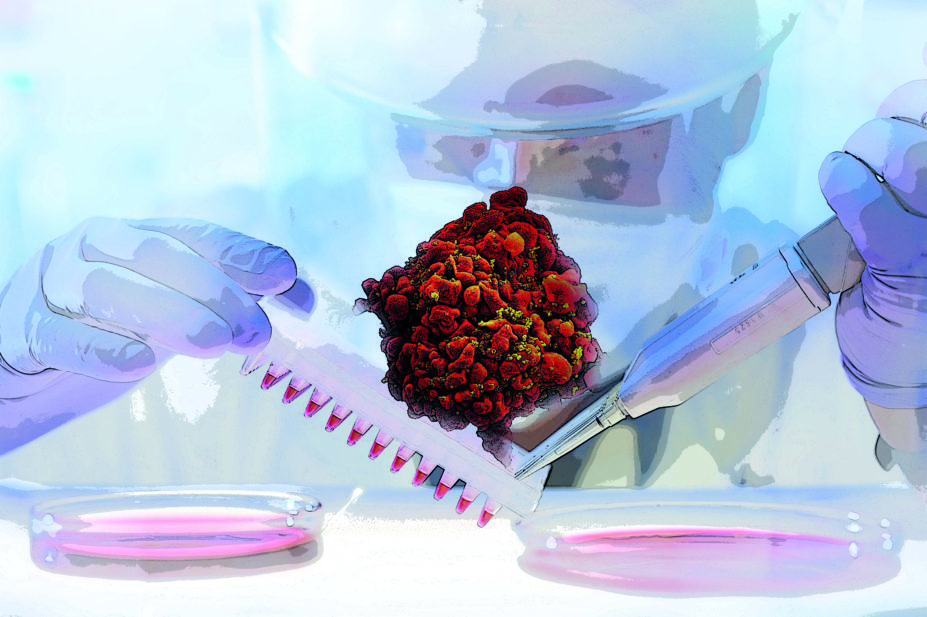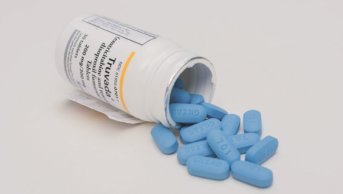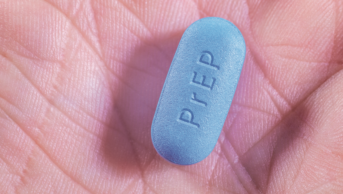
Shutterstock.com / National Institute of Allergy and Infectious Diseases (NIAID)
The evolution of antiretroviral therapy (ART) to treat HIV over the past three decades has been a remarkable achievement that has transformed HIV from an almost inevitably terminal condition to one where HIV-positive individuals can be told to expect a normal life expectancy[1]
.
Research and development in HIV is now more focused on developing new drugs (with fewer side effects), new longer-acting drug formulations (e.g. injectables) with the aim of improving patient adherence, vaccines and, potentially, a cure. But resistance is still an ongoing issue and the problem is actually growing in some parts of the world[2]
,[3]
. The World Health Organization (WHO) reported that up to 2010, HIV drug resistance levels remained at 7% in developing countries. But since then, some countries have reported levels at or above 10% among those starting ART, and up to 40% among people restarting ART[4]
,[5]
. Healthcare professionals, including pharmacists, need to continue to be vigilant in helping minimise HIV resistance.
How resistance develops
In order to understand how HIV resistance could be minimised, basic knowledge of how HIV resistance develops is essential. Most antiretrovirals (ARVs) work by inhibiting one of three viral enzymes: reverse transcriptase, integrase or protease. Reverse transcriptase, which translates viral RNA into DNA inside the target cells of the host (i.e. humans) is inherently error prone. This, combined with a high viral replication rate, results in frequent evolution of genetic variants or mutations. Most of these confer no advantage and, in the absence of drug exposure, the mutated strains disappear into the background leaving the natural or ‘wild-type’ virus dominant[6]
. However, the combination of viral replication with drug exposure will drive the evolution, and eventual dominance, of drug-resistant strains that may confer resistance to drugs from any class.
HIV resistance emerged soon after the first ARV, zidovudine, became available in the late 1980s. Zidovudine is a nucleoside reverse transcriptase inhibitor (NRTI) and, as a single agent, it demonstrates a low barrier to resistance, meaning that a few, rapidly emerging mutations confer high-level loss of susceptibility to the drug[7]
. During the 1980s and early 1990s, several other NRTIs were approved sequentially: didanosine, stavudine, zalcitabine and lamivudine. Combining two drugs delayed, but did not prevent, the emergence of resistance[8]
. It was not until the mid-1990s, when the second and third ARV classes, protease inhibitors (PIs) and non-nucleoside reverse transcriptase inhibitors (NNRTIs), were approved, that we learnt that combining three drugs (two NRTIs with a PI or NNRTI) provided sufficient potency and a high enough barrier to prevent resistance[9]
. This heralded the era of ‘highly active antiretroviral therapy’ (HAART) and, providing patients could tolerate the complex dosing regimens and major toxicity and tolerability issues associated with early ARVs, durable viral suppression and immune reconstitution resulted. The HAART era heralded dramatic reductions in HIV-related morbidity and mortality[10]
. Since then, a fourth major drug class, integrase inhibitors, has been introduced but the basic ‘recipe’ of two NRTIs plus a third drug for first-line treatment remains unchanged to this day[11]
.
HIV resistance can be broadly divided into acquired and transmitted. Acquired resistance results from new mutations that evolve secondary to suboptimal therapy or drug levels. Situations that may result in suboptimal therapy include: poor adherence; drug-drug interactions; inadequate drug absorption; or the use of suboptimal regimens, for example, owing to unrecognised resistance or selection of a combination that may later transpire to be suboptimal. Some historical combinations were later revealed to be inadequate based on subsequent evidence or experience.
Conversely, if an individual acquires HIV from someone who harbours a resistant HIV strain, that person, too, will demonstrate resistance to the same drugs. How long resistance persists will depend on the impact of the mutation (or mutations) on viral fitness. In the absence of drug exposure, HIV tends to evolve back towards wild-type (naturally occurring, non-mutated strain), although this will be slower if the fitness impact (the ability of the virus to adapt and reproduce) is low[12]
. Transmitted resistance tends to persist for longer than acquired — transmitted viral populations are relatively homogenous so most viruses will harbour the resistance mutation. Acquired resistance mutations will be detected in a subpopulation of viral particles, not all, therefore reversion to wild type may be more rapid[13]
.
Limiting resistance
Although HIV mutations, leading to drug resistance, continues to be a concern, there are ways to limit this[11]
. Doctors, pharmacists and nurses can help minimise HIV drug resistance through measures outlined below:
- Baseline resistance testing
Ideally, all individuals should undergo resistance testing as close to diagnosis as possible to detect any transmitted resistance and ensure optimisation of first-line therapy. - Drug adherence
Simple treatment regimens, clear explanation of the importance of adherence (and consequence of missed doses) to patients, tips to improve adherence (telephone reminders, apps, linking medication to another daily routine). This is an ideal area for pharmacists to intervene. - Prescribing tolerated therapy
Side effects are a significant cause of poor adherence and modern HIV drugs demonstrate much better tolerability profiles than earlier agents. However, side effects, including gastrointestinal problems and psychiatric problems, can still occur with some drug regimens, causing distress for patients and affecting adherence. Careful questioning about side effects and appropriate switch are important elements of HIV care. - Ensure patients and non-HIV clinicians, such as GPs, are aware of potential drug-drug interactions that may reduce ARV plasma exposure
For example, proton pump inhibitors reduce levels of some ARVs. Patients should be encouraged to check with a pharmacist if they cannot reach HIV clinicians for advice or when purchasing over-the-counter medicines. Alternatively, they could be directed to drug apps or websites such as the HIV Drug Interaction Checker http://www.hiv-druginteractions.org/ - Avoid treatment interruption
This is particularly important if components of a combined regimen have different plasma half-lives. For example, stopping three drugs with different plasma half-lives may foster mutations, particularly if the ‘longer-lasting’ drug has a low barrier to resistance. Examples of when people may stop treatment include stopping while with family for fear of disclosure, stopping medication when travelling to countries that restrict entry for people with HIV or ‘drug holidays’ when individuals on HIV treatment choose to stop medication for a rest from daily pill-taking or side effects. Beyond resistance evidence shows that treatment interruption is associated with an increased risk of both HIV-related and non-HIV-related conditions (such as cardiovascular and renal disease)[14]
. - Ensure prompt switch if a low barrier regimen is failing
The longer an individual remains on failing antiretrovirals the greater the risk of accumulating resistance and cross-resistance to more agents. - Avoid switching high barrier to low barrier drugs in the setting of resistance or prior virological failure
Low barrier drugs require fully active supporting drugs in the regimen. Any reduction in susceptibility to other regimen components may be unmasked if a more robust drug is switched to one that is less so. - Prescribe regimens with proven efficacy
With continued new drugs entering the market, there can be a tendency to jump on the bandwagon of the latest ‘novel approach’ while data is limited and the durability of said regimen is unproven. Although pilot studies and exploration of novel approaches is an important part of therapy evolution, any switch to an under-studied regimen must be fully explained and justified (for example, if the ‘new’ combination is indicated owing to limiting side effects or drug-drug interactions). Some recent monotherapy studies have not all yielded positive results and are a warning that cautious explorations of new strategies is not the same as careless experimentation. It can also take time for negative drug trial results to filter to the prescribing community; small studies and cohorts describing regimens already proven to be inferior in randomised controlled trials are not uncommon. - Avoid low barrier regimens in patients at risk of treatment failure
Predicting adherence is, at best, difficult. However, individuals who have previously experienced treatment failure resulting from poor adherence; who demonstrate poor clinic attendance and engagement; who have housing or financial difficulties; who face immigration issues; who have cognitive impairment; or who report problems related to drug or alcohol use may be better served with a high barrier ARV regimen.
More work to do
Although HIV resistance globally is a growing concern, we seem to be getting some things right in the UK because there has been a decline in the prevalence of transmitted resistance (i.e resistance detected on baseline samples before drug initiation), from 8.1% in 2010 to 6.6% in 2013[15]
. In terms of people who have been treated then undergone resistance testing, based on 2013 figures, around one in three has some sort of resistance compared with two in three a decade before[16]
. Although the proportion seems high, this is only individuals who have ‘failed’ treatment (i.e developed a detectable viral load on therapy). It is also reassuring that, generally, HIV-positive individuals do not experience virological failure nor develop resistance so the development of new resistance in the treated population is low. Current UK figures show that 94% of all people living with HIV on therapy have an undetectable plasma viral load on treatment[17]
.
There are some potentially exciting developments in the pipeline which will also help limit HIV drug resistance. Injectable ARVs are well into phase III development. Injectable drugs negate the requirement for daily pill taking but there is a lack of data regarding the potential implications of missed injections. Ideally, any depot drug formulation would yield a sudden and rapid decline in drug levels at the end of the dosing interval rather than a slow decay (thus reducing the possibility of drug resistance developing). Longer half-life oral agents requiring less frequent dosing are also being developed but there is a lack of evidence to show whether non-daily dosing confers adherence advantage over taking medicines every day.
Ultimately, any condition where the causative agent can develop resistance to therapeutic agents requires a pipeline of drugs from existing classes that are active against resistant strains and drugs with novel mechanisms of action. Right now, most people with HIV experience successful outcomes on existing drug options, provided access to medicines and adherence are not issues. This, combined with the increasing availability of generic versions of ARVs in resource-rich countries has implications for the potential returns on the undoubtedly high costs of drug development. We are still in the early days of the ‘integrase era’, the use of pre-exposure prophylaxis and earlier ART initiation. Only careful monitoring of resistance patterns will tell us if we are equipped to treat all people with HIV over the decades to come. Governments, policymakers, clinicians and researchers must not take the foot off the accelerator if we are to achieve the ambitious goal of zero new infections[18]
.
Declaration of interest: Dr Waters has received advisory/speaker fees or conference support from Gilead, ViiV, MSD and Janssen, manufacturers of HIV medicines
Laura Waters is consultant in genito-urinary and HIV medicine, HIV and hepatitis lead Central and North West London NHS Foundation Trust
References
[1] May MT, Gompels M, Delpech V et al. Impact on life expectancy of HIV-1 positive individuals of CD4+ cell count and viral load response to antiretroviral therapy. AIDS 2014;28(8):1193–1202. doi: 10.1097/QAD.0000000000000243
[2] The TenoRes Study Group. Global epidemiology of drug resistance after failure of WHO recommended first-line regimens for adult HIV-1 infection: a multicentre retrospective cohort study. Lancet Infect Dis 2016;16(5):565–575. doi: 10.1016/S1473-3099(15)00536-8
[3] Austen K. Aids deaths tumble but rising resistance to HIV drugs threatens gains. The Guardian 18 July 2014. Available at: https://www.theguardian.com/global-development/2014/jul/18/aids-deaths-hiv-drugs-resistance-antiretrovirals (accessed April 2017)
[4] Hong S. How to combat the threat of HIV drug resistance. The Guardian 11 August 2016. Available at: https://www.theguardian.com/global-development-professionals-network/2016/aug/11/hiv-drug-resistance-aids-free-generation (accessed April 2017)
[5] World Health Organization. WHO warns countries of growing risk of HIV drug resistance. 18 July 2016. Available at: http://www.who.int/hiv/mediacentre/news/warning-hiv-drug-resistance/en/ (accessed April 2017).
[6] Boettiger DC, Kiertiburanakul S, Sungkanuparph S et al. The impact of wild-type reversion on transmitted resistance surveillance. Antivir Ther 2014;19(7):719–722. doi: 10.3851/IMP2746
[7] Smith MS, Brian EL & Pagano JS. Resumption of virus production after human immunodeficiency virus infection of T lymphocytes in the presence of azidothymidine. J Virol 1987;61(12):3769–3773. PMID: 2446006
[8] Collier AC, Coombs RW, Fischl MA et al. Combination therapy with zidovudine and didanosine compared with zidovudine alone in HIV-1 infection. Ann Intern Med 1993;119(8):786–793. PMID: 8379600
[9] Baker R. 3-drug therapy reduces deaths and new AIDS-related illnesses by 50%. BETA. 1997 Mar:3–4. PMID: 11364527
[10] Mocroft A, Ledergerber B, Katlama C et al. Decline in the AIDS and death rates in the EuroSIDA study: an observational study. Lancet 2003;362(9377):22-29. PMID: 12853195
[11] Churchill D, Waters L, Ahmed N et al. British HIV Association guidelines for the treatment of HIV-1-positive adults with antiretroviral therapy 2015. HIV Med 2016;17 Suppl 4:s2–s104. doi: 10.1111/hiv.12426.
[12] Yang WL, Kouyos RD, Böni J et al. Persistence of transmitted HIV-1 drug resistance mutations associated with fitness costs and viral genetic backgrounds. PLoS Pathog 2015;11(3):e1004722. doi: 10.1371/journal.ppat.1004722.
[13] Jain V, Sucupira MC, Bacchetti P et al. Differential persistence of transmitted HIV-1 drug resistance mutation classes. J Infect Dis 2011;203(8):1174–1181. doi: 10.1093/infdis/jiq167
[14] El-Sadr WM, Lundgren J, Neaton JD et al. CD4+ count-guided interruption of antiretroviral treatment. N Engl J Med 2006;355(22):2283–2296. doi: 10.1056/NEJMoa062360
[15] Tostevin A, White E, Dunn D et al. Recent trends and patterns in HIV-1 transmitted drug resistance in the United Kingdom. HIV Med 2016;18(3):204–213. doi: 10.1111/hiv.12414
[16] UK HIV Drug Resistance Database. Available at: www.ctu.mrc.ac.uk/our_research/research_areas/hiv/studies/hivdrd/ (accessed April 2017)
[17] Public Health England. HIV in the UK: 2016 report. Available at: https://www.gov.uk/government/uploads/system/uploads/attachment_data/file/574667/HIV_in_the_UK_2016.pdf (accessed April 2017)
[18] Department for International Development. Towards zero infections: the UK’s position paper on HIV in the developing world. May 2011. Available at: https://www.gov.uk/government/uploads/system/uploads/attachment_data/file/67523/twds-zero-infs-pos-paper-hiv-dev-wrld.pdf (accessed April 2017)


